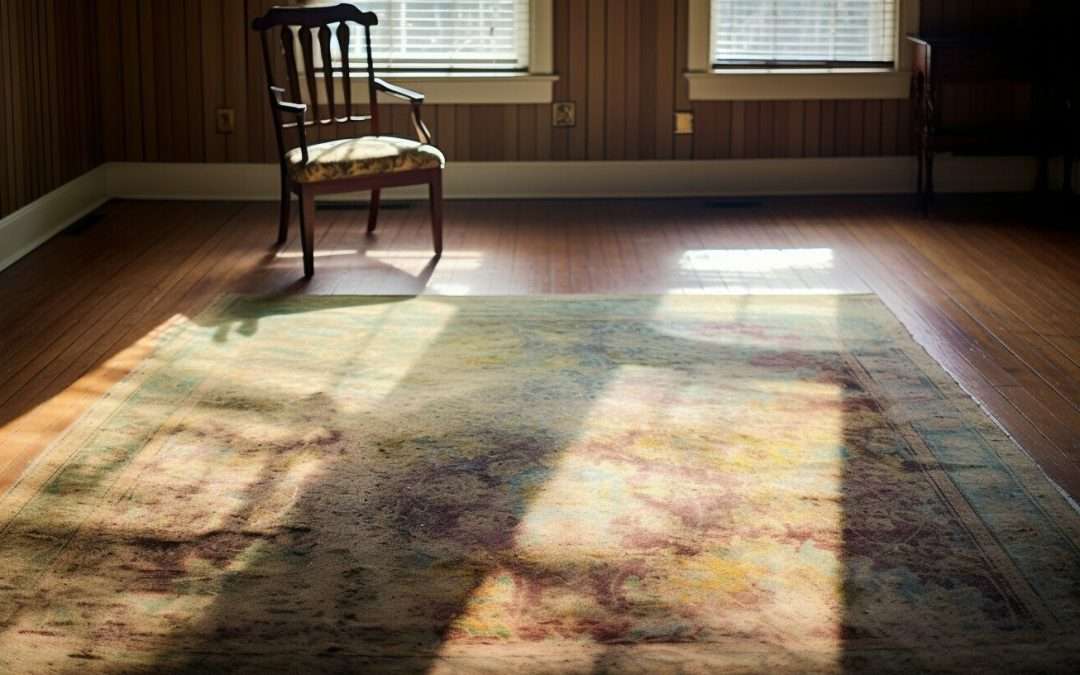As a carpet owner, understanding when it’s time to replace your carpets is crucial for maintaining a clean and inviting space. There are several signs to look out for, such as stains that can no longer be hidden, persistent odors, bald patches or matting, loss of cushioning, dampness, increased allergies, and outdated style. The lifespan of carpet can vary depending on factors such as material, quality, usage, and maintenance, but it generally ranges from 5 to 15 years. Factors like discoloration, increased footfall, wear and tear, and style preferences can also influence the decision to replace carpets. Taking good care of carpets through regular cleaning and maintenance can help prolong their lifespan.
Key Takeaways:
- Recognize signs of worn-out carpets, such as stains, odors, bald patches, and dampness.
- Consider factors like discoloration, increased footfall, wear and tear, and style preferences when deciding to replace carpets.
- Understand that the lifespan of carpets can range from 5 to 15 years depending on various factors.
- Regular cleaning and maintenance can help extend the lifespan of carpets.
- Knowing when to replace carpets is crucial for maintaining a clean and inviting space.
Signs That Indicate Your Carpets Need Replacement
Understanding the lifespan of your carpets and recognizing the signs that indicate the need for replacement is essential for maintaining a fresh and healthy home environment. Over time, carpets can become worn out and lose their aesthetic appeal, as well as accumulate dirt, allergens, and odors that can impact indoor air quality. By paying attention to these signs, you can make an informed decision about when it’s time to change your carpets.
1. Stains that can no longer be hidden
While regular cleaning can help remove stains, there may come a point where they become permanent and impossible to hide. Stubborn stains can be an eyesore and detract from the overall appearance of your home. If you’ve tried different cleaning methods without success, it’s a clear indication that your carpets may need replacement.
2. Bald patches or matting
As carpets age, they may develop bald patches or areas of matting where the fibers have worn down. These patches not only affect the carpet’s appearance but also its functionality. Matting can make your carpets uncomfortable to walk on and can be a sign of significant wear and tear. If your carpets have noticeable bald patches or matting, it may be time for a replacement.
3. Loss of cushioning
Over time, carpets lose their cushioning and become less comfortable to walk on. If you notice that your carpets are no longer providing the softness and comfort they once did, it’s a sign that the padding underneath may have deteriorated. This loss of cushioning can impact the overall comfort and functionality of your floors, indicating the need for replacement.
4. Increased allergies
If you or your family members are experiencing an increase in allergies or respiratory issues, worn-out carpets could be to blame. Carpets can trap allergens such as dust, pet dander, and pollen, and when they become worn, these allergens can become more difficult to remove. If your carpets are triggering allergies or causing respiratory discomfort, it’s worth considering a replacement to improve indoor air quality.
By paying attention to these signs, you can determine when it’s time to get new carpets. However, it’s important to note that the lifespan of carpets can vary depending on factors such as material, quality, usage, and maintenance. Regular cleaning and maintenance, including vacuuming and professional deep cleaning, can help extend the lifespan of your carpets and keep them looking fresh for longer.
Factors to Consider When Replacing Your Carpets
When considering replacing your carpets, it’s important to assess various factors to ensure you choose the right time and make the best decision for your home. There are several key factors that you should take into account:
1. Discoloration:
Over time, carpets can become discolored due to sunlight exposure, spills, and general wear and tear. If your carpet has lost its original color and efforts to clean or restore it have been unsuccessful, it may be a sign that it’s time for a replacement.
2. Increased Footfall:
The amount of foot traffic your carpet receives can significantly impact its lifespan. Carpets in high-traffic areas tend to wear out faster than those in less-used spaces. If you’ve noticed that your carpet has become worn, flattened, or matted in heavily trafficked areas, it may be a good indication that replacement is necessary.
3. Wear and Tear:
Inspect your carpet for signs of wear and tear, such as frayed edges, loose threads, or visible damage. If your carpet has reached a point where repairs are no longer feasible or cost-effective, it’s probably time to consider replacing it.
4. Style Preferences:
Another factor to consider when replacing your carpets is your style preferences. If your current carpet no longer matches your interior design or if you simply want to update the look and feel of your home, it may be a good time to explore new carpet options.
Remember, proper care and maintenance can help extend the lifespan of your carpets. Regular vacuuming, spot cleaning, and professional deep cleaning can all contribute to keeping your carpets looking their best for longer. By assessing these factors and taking good care of your carpets, you can make an informed decision about when to replace them and ensure a fresh and comfortable living space for years to come.
| Factors to Consider | Signs of Replacement |
|---|---|
| Discoloration | Loss of original color despite cleaning efforts |
| Increased Footfall | Worn, flattened, or matted areas in high-traffic zones |
| Wear and Tear | Frayed edges, loose threads, or visible damage |
| Style Preferences | Outdated design or desire for a new aesthetic |
In summary
By keeping an eye out for signs of worn-out carpets, considering relevant factors, and maintaining regular cleaning and maintenance routines, you can ensure that your carpets always look their best and contribute to a welcoming and comfortable living space.
Knowing when it’s time to replace your carpets is crucial for carpet owners. There are several signs to look out for, such as stains that can no longer be hidden, persistent odors, bald patches or matting, loss of cushioning, dampness, increased allergies, and outdated style. These signs indicate that your carpets have reached the end of their usable life and need to be replaced.
The lifespan of carpets can vary depending on factors such as material, quality, usage, and maintenance. On average, carpets last between 5 to 15 years. However, factors like discoloration, increased footfall, wear and tear, and style preferences can also influence the decision to replace carpets.
By taking good care of your carpets through regular cleaning and maintenance, you can help prolong their lifespan. Vacuuming regularly, treating stains promptly, and hiring professional carpet cleaning services are all effective ways to ensure that your carpets stay in good condition for as long as possible.
When the time comes to replace your carpets, be sure to consider factors like the overall condition of the carpet, the amount of foot traffic in the area, and your personal style preferences. By making an informed decision and investing in high-quality carpets, you can create a beautiful and comfortable living space that reflects your unique taste and personality.
FAQ
When should I replace my carpets?
There are several signs to look out for, such as stains that can no longer be hidden, persistent odors, bald patches or matting, loss of cushioning, dampness, increased allergies, and outdated style.
How long do carpets typically last?
The lifespan of carpets can vary depending on factors such as material, quality, usage, and maintenance, but it generally ranges from 5 to 15 years.
What are some factors to consider when deciding to replace carpets?
Factors like discoloration, increased footfall, wear and tear, and style preferences can influence the decision to replace carpets. Regular cleaning and maintenance can also help prolong their lifespan.
What is the importance of recognizing the signs of worn-out carpets?
Recognizing the signs of worn-out carpets is important to avoid further damage. It allows homeowners to take prompt action and ensure the comfort and hygiene of their living spaces.
How can I prolong the lifespan of my carpets?
Taking good care of carpets through regular cleaning and maintenance, such as vacuuming and professional deep cleaning, can help prolong their lifespan and maintain their appearance.
Why is it important to consider various factors when replacing carpets?
Considering factors like discoloration, footfall, wear and tear, and style preferences allows homeowners to make an informed decision that aligns with their needs and preferences, ensuring long-term satisfaction with their new carpets.
Can I replace my carpets myself or should I hire a professional?
While replacing carpets yourself is possible, hiring a professional can ensure proper installation and minimize potential issues. Professionals have the expertise and tools to handle the job efficiently and effectively.
What should I do with my old carpets?
Depending on their condition, you can consider donating them to charities or recycling programs. Some organizations repurpose old carpets for various purposes, contributing to sustainability efforts.





Recent Comments